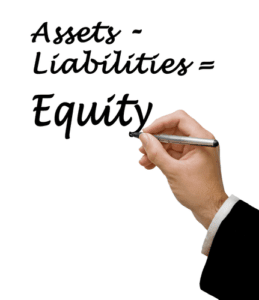
The cash flow statement is one of the three financial reports that a company generates in an accounting period. One of the sections of the cash flow statement is cash flow from investing activities. These can either be positive (cash generated by sales of investment securities or assets) or negative (cash spent on long-term assets, lending, or marketable securities).
- This tactic maintains inflow and reduces the risk of late or missed payments.
- Essentially, if stock prices are a function of the underlying fundamentals, then a positive FCF trend should be correlated with positive stock price trends on average.
- In the previous example, an investor could detect that this is the case by looking to see if CapEx was growing between 2019 and 2021.
- Open up a world of proactive decision making and solving cash flow problems before they happen.
- To find your NWC, you’ll need the Balance Sheets from two consecutive periods (a period can either be a fiscal quarter or a year).
- Cash flow from assets is defined as the total monetary value or cash flow generated by the assets owned by an individual or company.
Cash Flow Statement vs Income Statement vs Balance Sheet
It also helps investors and creditors assess the financial health of the company. The cash flow statement presents a good overview of the company’s spending because it captures all the cash that comes in and goes out. This is another example of a cash flow statement of Nike, Inc. using the indirect method for the fiscal year ending May 31, 2021.

Cash flow forecast formula
The operating cash flow margin ratio compares cash from operating activities to sales revenue in a particular period. A positive margin shows that a company is able to convert sales to cash and can indicate profitability and earnings quality. For instance, many financial professionals consider a company’s net operating cash flow to be the sum of its net income, depreciation, and amortization (non-cash charges in the income statement). While often coming close to net operating cash flow, this interpretation can be inaccurate, and investors should stick with using the net operating cash flow figure from the cash flow statement.
Great! The Financial Professional Will Get Back To You Soon.
With the indirect method, cash flow is calculated by adjusting net income by adding or subtracting differences resulting from non-cash transactions. Non-cash items show up in the changes to a company’s assets and liabilities on the balance sheet from one period to the next. Consider a hypothetical company’s net annual cash flow from investing activities.

- A company could have diverging trends like these because management is investing in property, plant, and equipment to grow the business.
- In the case of Shania and her magazine, she might decide to move from print to digital, drastically reducing operational costs.
- For instance, if a company realizes that it will have a cash shortfall in the next month, it can take steps to ensure enough funds are available.
- Note that if there were any dividends issued to shareholders, the amount paid out would come out of retained earnings.
- Finally, you always can seek out the advice and services of a professional—like a business accountant or bookkeeper.
Learn how a company calculates free cash flow and how to interpret that FCF number to choose good investments that will generate a return on your capital. Cash flow analysis is essential for sustaining business operations and achieving long-term growth. It can inform everything from investment and operational decisions to strategic planning and budgeting. Via Fathom’s waterfall chart, you can quickly determine your operating, free and net cash flow. It helps you understand the quality of cash flow, its sources and whether it’s diminishing, sustainable or subject to fluctuations. Cash flow analysis is crucial to understanding your business’ financial health, yet it presents several challenges that can complicate an accurate assessment.

Positive Cash Flow
For the year, the company spent $30 billion on capital expenditures, of which the majority were fixed assets. Along with this, it purchased $5 billion in investments and spent $1 billion on acquisitions. The company also realized a positive inflow of $3 billion from the sale of investments.

It covers such activities as borrowing and repaying debt, issuing and repurchasing stocks, and paying dividends. In this guide, we provide an easy-to-understand outline of cash flow analysis covering the various methods, ratios and metrics you’ll need to assess your business’ liquidity. GAAP (ASC 230) and IFRS (IAS 7) accounting standards both require cash flow statements as part of the financial reporting process. After listing the business’s activities, the statement shows the total increase or decrease in cash and cash equivalents. A positive number reflects a net increase, while a negative number reflects a net decrease.
Think of a balance sheet as a report that calculates the company’s value. That’s because the accrual method that most businesses use to record income when it’s earned and expenses when they’re incurred. Often, this timing doesn’t align with when the cash arrives or leaves the account. It includes several components that don’t factor into cash flow, such as credit-based sales and depreciation. But businesses with uneven cash flow over multiple reporting periods often appear unstable.
Free cash flow (FCF) is the money that remains after a company pays for everyday operating expenses and capital expenditures. Knowing a company’s free cash flow can give insight into its financial health. For investors, the CFS reflects a company’s financial health, since typically the more cash that’s available for business operations, the better. Sometimes, a negative cash flow results from a company’s growth strategy in the form of expanding its operations. Unlevered free cash flow is the cash flow a business has, without accounting for any interest payments.
- It also helps investors and creditors assess the financial health of the company.
- This can give you a more realistic view of your net cash flow and the health of your business.
- As with any financial statement analysis, it’s best to analyze the cash flow statement in tandem with the balance sheet and income statement to get a complete picture of a company’s financial health.
- The Finmark Blog is here to educate founders on key financial metrics, startup best practices, and everything else to give you the confidence to drive your business forward.
- It helps you understand the quality of cash flow, its sources and whether it’s diminishing, sustainable or subject to fluctuations.
- Here we explore some practical ways you can improve your business’ working capital and cash flow practices among your staff.
You can calculate a comprehensive free cash flow ratio by dividing the free cash flow by net operating cash flow to get a percentage ratio. Securing favorable credit terms as a buyer can help you keep cash calculate cash flow from assets on-hand for longer. For example, rather than operating on net 15 payment terms, you could push to operate on net 30 payment terms, giving yourself more time to pay, which can improve your cash flow.
